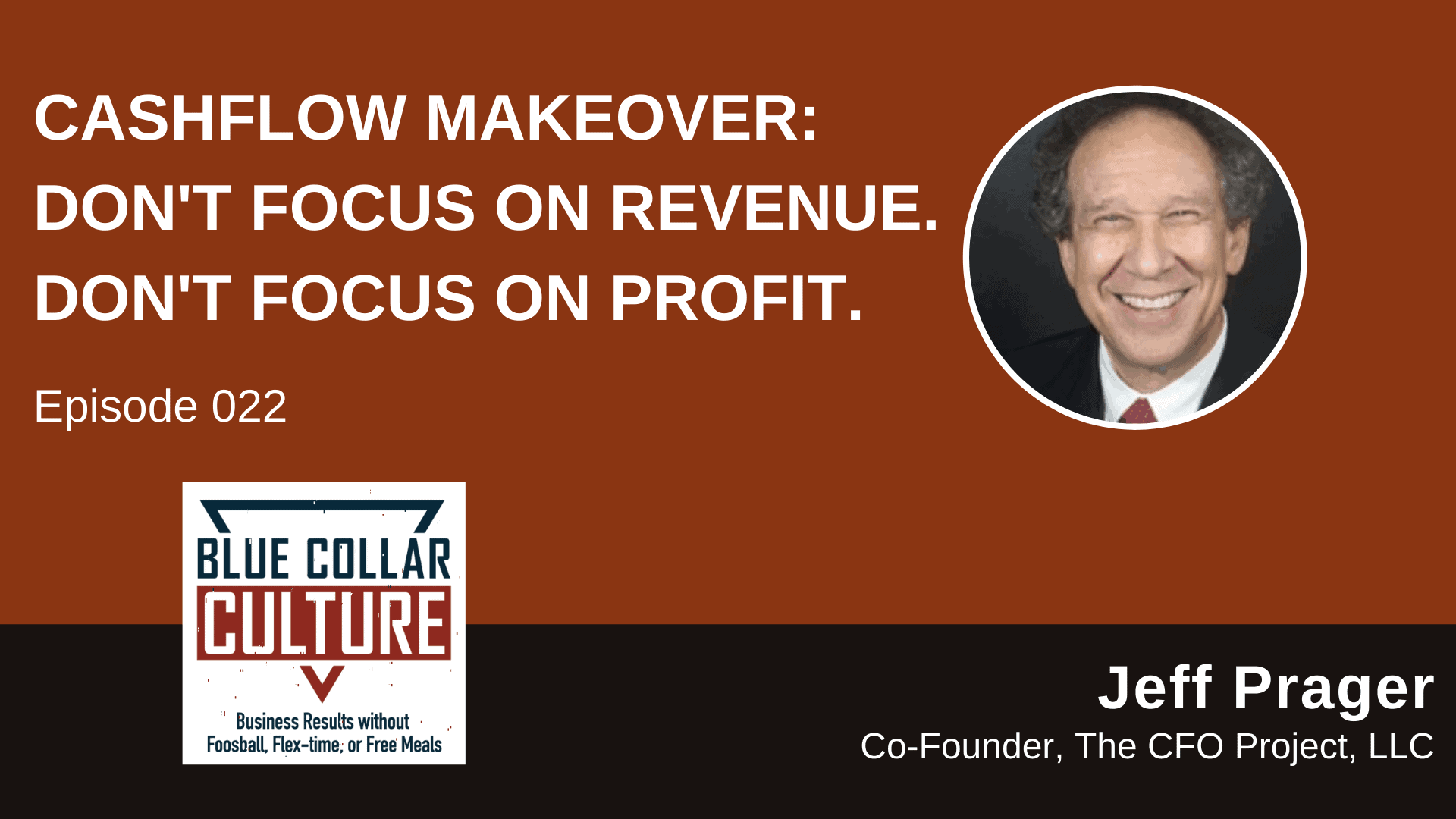On this week’s episode of The Blue Collar Culture Podcast, we speak with special guest Jeff Prager, a founding partner of The CFO Project. Money is something we don’t always talk about, but love to have, and when it comes to business, there are sometimes things that keep us from making the kind of money that we should be making. Jeff is a CPA who has been involved in cash flow engineering for many years, and has grown companies to eight and even nine figures. He joins us today to have an in-depth conversation about cash flow.
“The idea behind cash flow engineering and The CFO Project is every dollar you invest in your business, you want a buck and a quarter back. How many of you would invest $1 in the stock market if you thought you were going to get 87 cents back? And we don’t apply that same theory to our own businesses. We’re leaking cash in places that your accountants, your bookkeepers, your CPAs are not telling you. As business owners, we only have to think about cash in versus cash out. Cash coming in has got to be greater than cash going out. It’s really simple,” says Jeff.
We chat about letting go of the ideas of revenue and profit, as well as:
- The seven key numbers to drive business growth
- Calculating the right speed for your business’ growth
- Business’ most common “cash drips”
- Helping clients overcome the barrier of talking about finances
- And more
Listen now…

